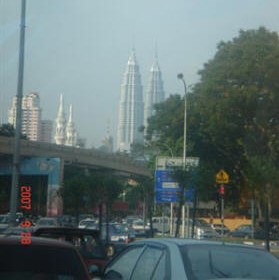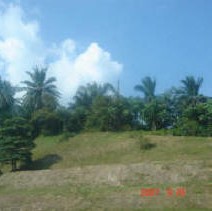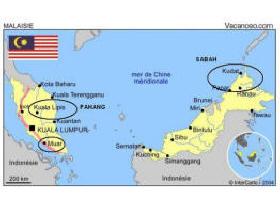Malaysia

Malaysia is located between Singapore and Thailand and has a population of 27 million inhabitants.
Its population is composed as follows: 60% of Malays, 30% Chinese, 5% Indians and 5% of Eurasians, i.e. of mixed nationalities and origins.
The country has a thriving economy and is developing very rapidly.
The capital Kuala Lumpur has an abundance of impressive skyscrapers. It also has the iconic twin towers, one of which was apparently built by Japanese and the other by Koreans.
The country is above all known for its production of its oil-producing plants. Palm trees cover a large part of the areas suitable for cultivation.


History
Cocoa was introduced into Malaysia between the 17th and 18th centuries.
The first record of a cocoa plantation dates from 1778 in Malacca.
However, cocoa was not really commercialised before 1853, with the cultivation of Amelonado which produces a pod which resembles a melon, in Jerangua and Terrengganu. The area cultivated covered approximately 400 hectares.
Cocoa cultivation developed strongly between 1970 and 1980 thanks to the availability of appropriated land, very productive plants and very high cocoa prices.
The quantities of cocoa produced today have fallen considerably but cocoa is still the 3rd most important agricultural export after palm oil and rubber.
Cultivated surfaces represented ± 400,000 ha in 1990. Today, that figure has fallen to not more than ± 33,000 ha, with 24,000 ha being cultivated by small farms and the other ± 9.000 ha on plantations.
With cocoa production of 30,000 tonnes, this corresponds to ± 900 kg per ha on average, which is not bad.
Production between regions can be broken down as follows: approximately 9,500 tonnes in the Malaysian peninsula, 18,500 tonnes in the Sabah region (Borneo) and ± 2,000 tonnes in the Sarawak region.
Initially, and up to 1970, production was exported in the form of dried beans.
Small-scale local production of cocoa butter and powder started in 1972.
In 1980 approximately 5,000 tonnes were thus processed.
Today there are 10 plants which together process almost 240,000 tonnes. This means therefore that large quantities of beans are imported.
Malaysia has the largest cocoa processing industry in Asia/Oceania, followed by Indonesia and Singapore.
It is the 5th largest processing country in the world, after the Netherlands, the USA, the Ivory Coast and Germany.
In 2005 exports could be broken down as follows:
- Dried beans: 7,000 tonnes.
- Cocoa paste: 8,500 tonnes.
- Partially defatted cocoa paste: 11,500 tonnes.
- Cocoa butter: 62,500 tonnes.
- Cocoa powder: 58,000 tonnes.
- Chocolate: 13,500 tonnes.
Quality Control
The Standard and Industrial Research Institute of Malaysia (SIRIM) has, in conjunction with public and private sector agencies, fixed standards to be respected:
- for beans
- for cocoa butter
- for cocoa powder
A system of registration and production licences for the complete production chain (farmers, intermediaries, processors) has been set up by the Malaysian Cocoa Board.
All these measures should help to improve considerably the quality of Malaysian cocoa.